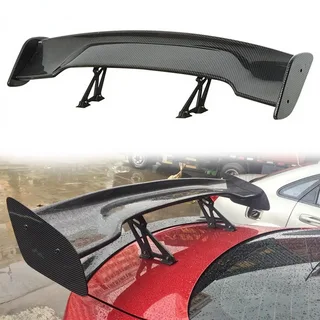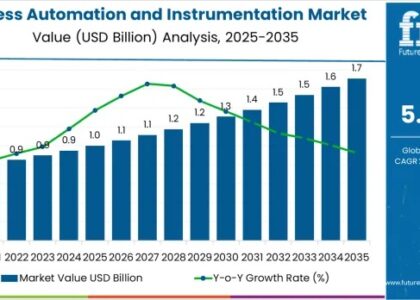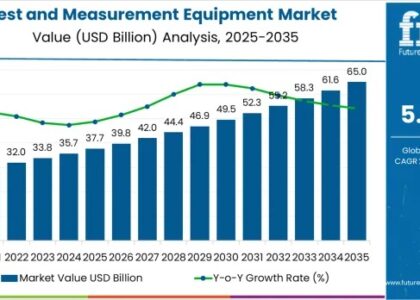The Active Spoiler Market is estimated to be valued at approximately over USD 6.7 Billion in 2035 and will rise at a rate of CAGR of 6.5% during the forecast period. Importantly, advanced materials, electronic controls, and automation are forecast to increase total vehicle aerodynamics to new levels, thus significantly increasing innovation and adoption through many automotive segments
In an era where vehicles are evolving into software-defined, sensor-packed, and performance-optimized machines, design is no longer just about looks—it’s about intelligence. Among the hidden innovations quietly transforming the automotive landscape is a feature that barely gets attention until it moves: the active spoiler. Far more than a visual flourish, this component is fast becoming a critical player in the balance between speed, efficiency, and safety.
From electric hypercars to luxury sedans, active spoilers are ushering in a new era of adaptive aerodynamics—where performance is not only about horsepower, but also about how intelligently a vehicle interacts with air resistance, real-time conditions, and driver intent.
Get Ahead with Our Report: Request Your Sample Now!
https://www.futuremarketinsights.com/reports/sample/rep-gb-13844
Beyond Static Design: Intelligence in Motion
Traditional spoilers were fixed solutions—designed for peak performance at high speeds but often compromising efficiency at lower ones. Today’s active spoilers change that equation. Integrated with vehicle control systems, they adjust their angle, height, and deployment based on speed, braking, cornering, or even weather conditions.
They don’t just improve downforce or reduce drag—they do both, depending on the situation. This dynamic responsiveness means better traction, sharper handling, shorter braking distances, and increased energy efficiency across diverse driving scenarios.
Overshadowed by Powertrains, Driven by Control
Much of the spotlight in automotive innovation falls on electric drivetrains, digital cockpits, or autonomous features. But active spoilers are quietly enabling these advancements by optimizing the physical performance envelope of the vehicle. Whether it’s reducing battery drain in EVs by cutting aerodynamic drag or keeping autonomous vehicles stable at varying speeds, the role of active spoilers is growing in relevance.
They work in tandem with other smart systems—from adaptive suspension to real-time telemetry—functioning as part of a broader vehicle dynamics strategy. Invisible most of the time, they activate only when needed, blending form with function in a seamless display of automotive engineering.

Real-Time Aerodynamics in a Digitized World
Active spoilers are part of a broader shift toward vehicles that adapt in real time. Just as AI chipsets enable real-time decision-making in autonomous driving, active aerodynamic elements enable real-time physical optimization. It’s not just intelligence in the cockpit—it’s intelligence in the chassis.
Whether responding to a sudden swerve, optimizing range on a highway, or preparing for emergency braking, these components interact directly with environmental inputs and vehicle data. As cars become rolling computers, active spoilers become actuated limbs—moving in sync with the vehicle’s digital nervous system.
A New Arena for Performance Innovation
As performance expectations evolve—from luxury EVs to track-ready supercars—OEMs are increasingly exploring how to integrate active aerodynamic solutions without sacrificing aesthetics, reliability, or cost-efficiency. This has triggered a wave of innovation in materials, actuator systems, and electronic integration.
Tier-1 suppliers and automotive startups alike are competing to create smaller, faster, and more durable spoiler systems that meet the demands of next-gen mobility. These are no longer bolt-on accessories; they’re embedded systems that must endure extreme weather, high speeds, and complex software coordination.
Exhaustive Market Report: A Complete Study
https://www.futuremarketinsights.com/reports/active-spoiler-market
Tied to Safety, Style, and Sustainability
The role of active spoilers isn’t just about performance—it’s about safety and sustainability too. By improving stability during emergency maneuvers and enhancing grip under adverse conditions, they contribute to active safety systems. Meanwhile, their ability to minimize drag at lower speeds aids in reducing fuel consumption or maximizing EV range.
Even aesthetically, active spoilers are shaping the visual language of modern vehicles—sleek, retractable, and often invisible until action is required. They help automakers deliver on the promise of futuristic design without compromising function.
The Quiet Architect of Driving Experience
You may never notice an active spoiler working—but you’ll feel its impact. In the way the car hugs a corner, stops more quickly, or glides more efficiently on the highway. These systems are silent contributors to a more refined, responsive, and intelligent drive.
As automotive design continues its transformation, active spoilers represent a perfect intersection of art, engineering, and data. Ignore their role, and you overlook a fundamental piece of the modern mobility puzzle. Invest in them, and you empower vehicles to adapt, protect, and perform—fluidly and intelligently.
In the world of adaptive mobility, the future isn’t just autonomous or electric—it’s aerodynamic by design. And at the center of that design is the spoiler that moves with purpose, in silence, and with precision.






